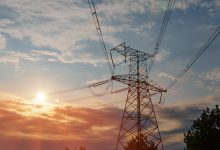A new study has been commissioned to help identify solutions to grid stability issues that have hampered wind and solar projects in Victoria, particularly in the West Murray region and a part of the grid known as the “rhombus of regret”.
Researchers from Monash University’s Grid Innovation Hub will undertake a $1.3 million desktop study into how additional renewable energy projects, including wind, solar and energy storage, can be connected to weaker parts of the electricity network.
The study will use the North-western region of Victoria as a case-study, where a number of new wind and solar projects have either faced lengthy delays in getting connected to the electricity network or have been forced to substantially curtail their output.
Researchers will work to identify suitable technical solutions to the system strength issues, including an evaluation of synchronous condensers and projects integrated with advanced inverter systems.
The study has been supported by a $495,680 grant from the Australian Renewable Energy Agency and has followed funding for another study into similar grid stability issues in Queensland. The Australian Energy Market Operator, energy equipment maker ABB and AusNet Services will also provide in-kind support to the Grid Innovation Hub study.
The outputs of the study will have wider relevance for the rest of the Australian electricity system, including the development of new Renewable Energy Zones currently being developed by the NSW government, which seek to concentrate wind, solar and storage projects in high-potential regions.
“This project should provide insights and possibly even pre-engineered solutions to ease the burden of grid stability and security, and speed up connection approvals,” Grind Innovation Hub director Dr Behrooz Bahrani said.
“Monash’s study, while looking at North West Victoria, will aim to provide a solution for other renewable energy zones across Australia and help to increase the value delivered by renewable energy, reduce or remove barriers to renewables uptake and help to increase the overall skills and capacity in this important area,” ARENA CEO Darren Miller added.
By addressing the system strength issues, the study hopes to facilitate further investment in renewable energy projects in regions with strong wind and solar resources, as well as to provide greater confidence to investors and project developers that future projects will not experience the same connection issues that have frustrated recent projects.
Chairman of the Monash Energy Institute’s Grid Innovation Hub, Dr Tony Marxsen, a former chair of AEMO, said that it was crucial that the growth in wind and solar projects was addressed, as the changing nature of the electricity system meant that it would be necessary for new technical solutions to be found as we shift away from an old model based on coal.
“Australia’s renewable energy future will use decentralised energy sources in areas of high winds and lots of sunshine – and these areas tend to be remote from cities, where the grid is weak. Even with the strengthened interconnections foreseen in AEMO’s Integrated System Plan, the problem of weak grids in remote areas will continue to challenge large renewable investments,” Marxsen said.
Managing director of the Australian Energy Market Operator, Audrey Zibelman said that the market operator was looking forward to the findings of the study and was confident that Australia had the ability to continue increasing the share of electricity sourced from wind and solar projects without long-term technical issues.
“Australia has the technical capability to operate our power system with solar and wind generation contributing up to 75 per cent of our energy at times,” Zibelman said.
“AEMO looks forward to supporting this important government-funded project that will contribute to maintaining system security in a transitioning National Electricity Market with a high share of renewable resources.”
Federal minister for energy and emissions reduction Angus Taylor said that the study would make an important contribution to seeing the share of electricity sourced from renewable energy grow beyond current levels.
“In 2019, 23 per cent of electricity generation in the National Electricity Market came from renewable energy. We need to ensure the grid can support Australia’s growing renewable resources, while keeping the lights on, and energy bills low for households and businesses,” Taylor said.
“Studies like this are important to help inform future decisions in terms of effective management of renewable energy in the grid.”










